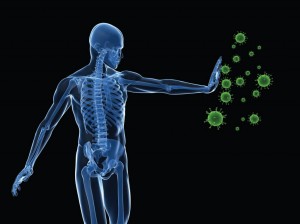Abstract
Cellular metabolism is important for adult neural stem/progenitor cell (NSPC) behavior. However, its role in the transition from quiescence to proliferation is not fully understood. We here show that the mitochondrial pyruvate carrier (MPC) plays a crucial and unexpected part in this process. MPC transports pyruvate into mitochondria, linking cytosolic glycolysis to mitochondrial tricarboxylic acid cycle and oxidative phosphorylation. Despite its metabolic key function, the role of MPC in NSPCs has not been addressed. We show that quiescent NSPCs have an active mitochondrial metabolism and express high levels of MPC. Pharmacological MPC inhibition increases aspartate and triggers NSPC activation. Furthermore, genetic Mpc1 ablation in vitro and in vivo also activates NSPCs, which differentiate into mature neurons, leading to overall increased hippocampal neurogenesis in adult and aged mice. These findings highlight the importance of metabolism for NSPC regulation and identify an important pathway through which mitochondrial pyruvate import controls NSPC quiescence and activation.
INTRODUCTION
Stem cells must maintain a tight balance between quiescence, proliferation, and differentiation to sustain lifelong tissue regeneration and maintenance. This is also the case for adult neural stem/progenitor cells (NSPCs), which form newborn neurons throughout life (1). NSPCs are primarily quiescent in adulthood but can proliferate upon intrinsic and extrinsic stimuli (2). Although NSPC activation is critical for proper neurogenesis, the underlying mechanisms are still not fully understood.
Cellular metabolism has been shown to determine the activity state of stem cells (3, 4), and metabolic features appear similar among different tissue-specific adult stem cells. In general, stem cells are rather glycolytic to support synthesis of cellular building blocks to sustain cell growth, while during differentiation, their metabolic profile shifts toward oxidative metabolism to generate adenosine triphosphate (5–13). Such a metabolic shift seems also important for NSPCs. Single-cell RNA sequencing (scRNA-seq) studies found decreased expression of glycolytic genes and an up-regulated expression of genes involved in oxidative phosphorylation (OXPHOS) at early stages of fate transition in adult NSPCs (14, 15). These findings are supported by metabolic analyses of NSPCs under differentiation in vitro (16, 17). However, recent findings suggest that when NSPCs are in a quiescent state, their metabolism might be substantially different from glycolytic, proliferating NSPCs: Quiescent NSPCs have high levels of mitochondrial fatty acid β-oxidation (FAO) and express many proteins involved in diverse aspects of mitochondrial metabolism (18, 19). Furthermore, mitochondria are abundant in NSPCs, and their dynamics affects self-renewal and fate choice (20, 21). Thus, mitochondrial metabolism might play a more important role for NSPC quiescence than previously anticipated.
A shift from a glycolytic to more oxidative metabolism very often requires a redirection of pyruvate, the end product of glycolysis, from lactate production toward mitochondrial oxidation in the tricarboxylic acid (TCA) cycle. The mitochondrial pyruvate carrier (MPC), a heterodimer of MPC1 and MPC2, is required for this transport (22–24). Absence of one of the two proteins leads to a loss of pyruvate transport and has a profound impact on the metabolic state of the cells (25, 26). Despite its key role in linking glycolysis and mitochondrial metabolism, it remains unknown whether MPC plays a regulatory role in NSPC behavior.
We here used pharmacological MPC inhibition and genetic deletion of Mpc1 to assess whether a disruption of pyruvate import into mitochondria would affect NSPC maintenance, activation, and differentiation. Unexpectedly, we found that quiescent NSPCs express high levels of MPC and require pyruvate import into mitochondria for the maintenance of quiescence. Inhibition of MPC triggers their activation by increasing the intracellular pool of aspartate despite a substantial decrease of TCA cycle intermediates. Furthermore, conditional MPC1-knockout (cKO)NSPCs are able to differentiate into mature neurons, indicating a high metabolic flexibility, which allows these cells to adapt their metabolism according to substrate availability. We further show that this increased activation and undisturbed differentiation of MPC1-cKO NSPCs leads to an overall increase in neurogenesis in adult and middle-aged mice.
RESULTS
MPC is dynamically regulated with activity state, and its transport function is required for NSPC quiescence
To determine the role of MPC in NSPCs, we first analyzed the expression of Mpc1 in existing RNA-seq databases. We found that Mpc1 is expressed in NSPCs and in other cell types in the dentate gyrus (DG) of adult mice (Fig. 1A) (27). Available images from DG sections of MPC1–green fluorescent protein (GFP) reporter mice (www.gensat.org) further showed expression of GFP in the subgranular zone of the DG (fig. S1A).







